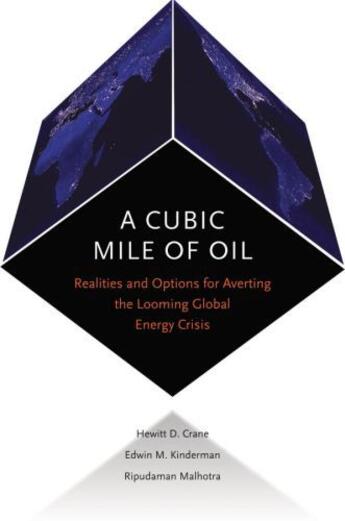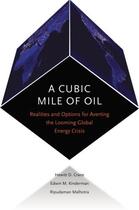-
Nombre de pages : (-)
-
Collection :
(-)
-
Genre :
(-)
-
Thème :
Non attribué
-
Prix littéraire(s) :
(-)
Résumé:
One cubic mile of oil (CMO) corresponds very closely to the world's current total annual consumption of crude oil. The world's total annual energy consumption - from all energy sources- is currently 3.0 CMO. By the middle of this century the world will need between 6 and 9 CMO of energy per... Voir plus
One cubic mile of oil (CMO) corresponds very closely to the world's current total annual consumption of crude oil. The world's total annual energy consumption - from all energy sources- is currently 3.0 CMO. By the middle of this century the world will need between 6 and 9 CMO of energy per year to provide for its citizens. Adequate energy is needed remove the scourge of poverty and provide food, clothing, and shelter for the people around the world, and more will be needed for measures to mitigate the potential effects of climate change such as building dikes and desalinating water.
A Cubic Mile of Oil describes the various energy sources and how we use them, projects their future contributions, and delineates what it would take to develop them to annually produce a CMO from each of them. The requirement for additional energy in the future is so daunting that we will need to use all resources. We also examine how improved efficiency and conservation measures can reduce future demand substantially, and help distinguish approaches that make a significant impact as opposed to merely making us feel good.
Use of CMO eliminates a multitude of units like tons of coal, gallons of oil, and cubic feet of gas; obviates the need for mind-numbing multipliers such as billions, trillions, and quadrillions; and replaces them with an easy-to-understand volumetric unit. It evokes a visceral response and allows experts, policy makers and the general public alike to form a mental picture of the magnitude of the challenge we face. In the absence of an appreciation of the scale of the problem, we risk squandering efforts and resources in pursuing options that will not meet tomorrow's global energy needs. We must make critical choices, and a common understandable language is essential for a sustained meaningful dialog.
Donner votre avis















